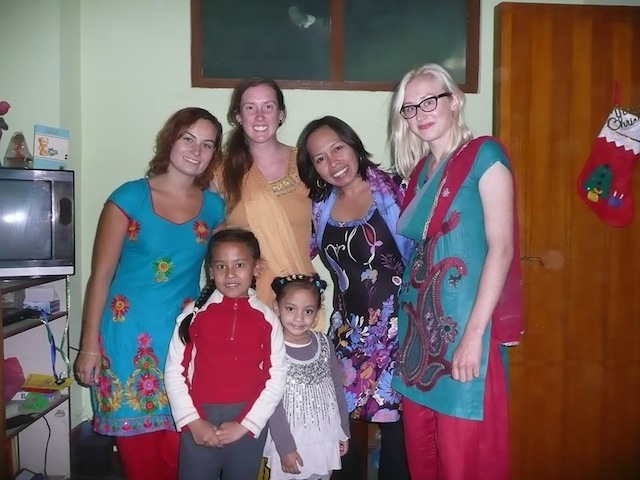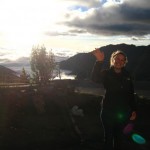Volunteering in Nepal: Feeling Empowered in New Ways

Before I left on my three-month volunteer trip to Nepal, I was warned to make sure I dressed modestly. “Dressing in revealing clothing is not accepted for both men and women. We suggest that you don’t wear short skirts and shorts, or clothing that reveals your shoulders” was what I read in my pre-departure information kit, numerous sites and blogs, and in the ‘social’ tab of my government’s travel advisories to Nepal.
As a female traveler, I found this to be distressing. How conservative was this foreign country? If I was being warned of this before I even left, what else would I experience upon my arrival? Would there be men leering at me all the time? Would I be able to walk alone? I wondered if Nepali women endured the same sexualization from men, and if this had led to the conservative dress recommendations in the first place. I knew that women were not treated equal to men in Nepal, but just how bad was it?
Why shouldn’t I be able to wear shorts in the summer, or a low cut shirt on an evening out? It’s my body, and I’m in control of it, right? But to my surprise, my view began to shift over time.
Determined to fit in, I set off with my t-shirts and long pants, despite the hot weather I knew I was stepping into. When I arrived in Nepal, I was glad I had chosen to follow this advice. Most women were wearing kurtas: matching outfits consisting of flowy cotton pants, a t-shirt that reaches the knees with long slits up the sides, and a matching shawl slung around the neck. I quickly bought a pair of these flowy pants, and eventually had my very own kurta made by a local tailor, which I wore with a mixture of awkwardness and pride.
From my Western outlook, I thought it was cute that these women still had a traditional dress. Western culture is so caught up in trends and fashion, it was refreshing to see people not worried about wearing socks with sandals. In fact, in Nepal you can purchase socks with a separated big toe, specifically for wearing with sandals!
When I was dressed this way, I no longer worried about monitoring the way I looked, as I would in tight-fitting clothes. I no longer worried about wardrobe malfunctions, like I would in short skirts or low-cut tops.
But despite this, I was still struggling with what I thought was oppression imposed by way of a dress code. Western culture emphasizes a woman’s freedom to dress any way she likes–a freedom that many young women, including myself–take full advantage of. Why shouldn’t I be able to wear shorts in the summer, or a low cut shirt on an evening out? It’s my body, and I’m in control of it, right? But to my surprise, my view began to shift over time.
After several weeks of living with a local host family in a small community and working with local women in the area, I also found myself becoming offended by the tourists who showed up to stupas and temples in shorts and t-shirts. I not only felt it was disrespectful to the local culture, but I found myself not used to seeing so much skin. I had grown accustomed to this modest lifestyle, and I found myself beginning to like it.
When I was dressed this way, I no longer worried about monitoring the way I looked, as I would in tight-fitting clothes. I no longer worried about wardrobe malfunctions, like I would in short skirts or low-cut tops. In my new modest dress, I had discovered a new type of freedom. I began to see the beauty in being covered. Rather than wanting to reveal myself, I wanted to cover myself up, not because I felt ashamed or oppressed, but because I liked the idea that people were engaged by my personality rather than my looks. I felt free to express myself without worrying about how I looked in the process.
I am confident that men and women alike would be kind to me no matter what I chose to wear in Nepal, but respecting their cultural code of dress taught me something I may not have ever learned at home.
Nepali women go about their day without worrying about their appearances. Fashion is not a priority and I began to appreciate the simplicity of this. In Western culture we use fashion as a vehicle to express our personality, but at what point have we become obsessed with outward appearance?
Volunteering in Nepal: Feeling Empowered in New Ways
I began to wonder, are we the ones who are oppressed? From girls Instagramming their #OOTD (outfit of the day), to new styles trending every week, we are a culture that is obsessed with fashion and appearances. We feel compelled to look a certain way and are continually left wondering if we measure up. Sometimes it can feel like our looks outweigh what our personalities have to offer.
Going to Nepal made me realize that modesty is not synonymous with oppression, and freedom isn’t about how much skin you can show. I am confident that men and women alike would be kind to me no matter what I chose to wear in Nepal, but respecting their cultural code of dress taught me something I may not have ever learned at home. Baggy pants and long-sleeve shirts can be just as empowering as high heels and mini skirts.
Volunteering in Nepal: Feeling Empowered in New Ways
Have you traveled to Nepal? How was your trip? Email us at [email protected] for information about sharing your experience and advice with the Pink Pangea community. We can’t wait to hear from you.
Volunteering in Nepal: Feeling Empowered in New Ways photo credit: Julia Bremner









One thought on “Volunteering in Nepal: Feeling Empowered in New Ways”